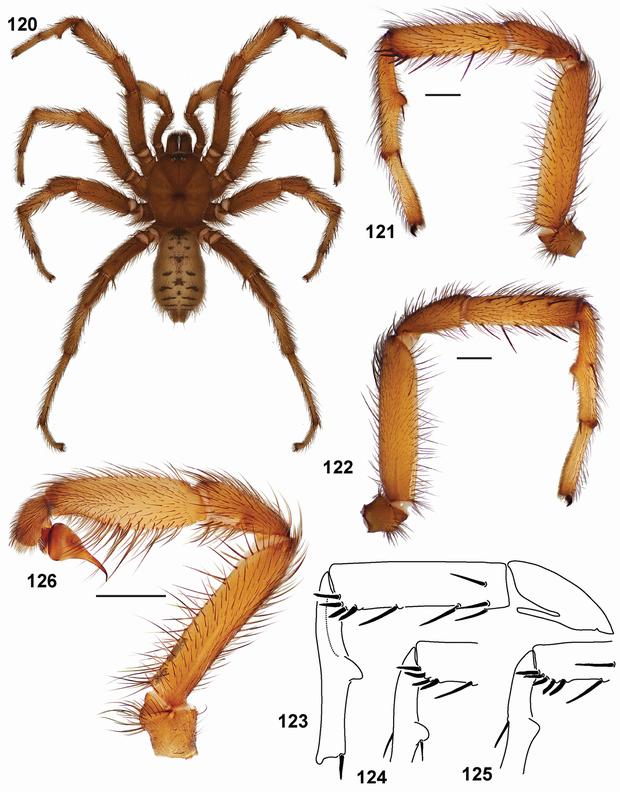A researcher at the Auburn University Museum of Natural History has reported the discovery 33 new trapdoor spider species from the American Southwest.
These newly described species all belong to the genus Aptostichus and the paper revises it to discuss all 40 species, which get attention for being named after celebrities – Aptostichus stephencolberti and Aptostichus angelinajolieae for Stephen Colbert and Angelina Jolie,
Aptostichus barackobamai for Barack Obama, the 44th president of the United States. Aptostichus bonoi is from Joshua Tree National Park but named for the lead singer of the Irish rock band U2 instead of after the actual Joshua Tree album that brought them pop music fame; Aptostichus pennjillettei is named for illusionist Penn Jillette (the Teller spider is apparently silent).
Even union activist César Chávez gets Aptostichus chavezi. Perhaps
Aptostichus Science2.0i is in the future?
Professor Jason Bond said in a statement, "California is known as what is characterized as a biodiversity hotspot. Although this designation is primarily based on plant diversity, the region is clearly very rich in its animal diversity as well. While it is absolutely remarkable that a large number of species from such a heavily populated area have gone unnoticed, it clearly speaks volumes to how little we know of the biodiversity around us and that many more species on the planet await discovery " Bond said.

Aptostichus pennjillettei. Credit: Zookeys
Like other trapdoor spider species, individuals are rarely seen because they live their lives in below-ground burrows that are covered by trapdoors, made by the spider using mixtures of soil, sand, and/or plant material, and silk. The trapdoor serves to hide the spider when it forages for meals at the burrow entrance, usually at night.
Aptostichus species are found in an amazing number of Californian habitats to include coastal sand dunes, chaparral, desert, oak woodland forests, and at high altitudes in the alpine habitats of the Sierra Nevada mountain range.
Bond said, "this particular group of trapdoor spiders are among some of the most beautiful with which I have worked; species often have gorgeous tiger-striping on their abdomens. Aptostichus to my mind represents a true adaptive radiation – a classical situation in evolutionary biology where diversification, or speciation, has occurred such that a large number of species occupy a wide range of different habitats".
Bond also noted that while a number of the species have rather fanciful names, his favorite is the one named for his daughter Elisabeth. "Elisabeth's spider is from an incredibly extreme desert environment out near Barstow, California that is the site of a relatively young volcanic cinder cone. The spiders make their burrows among the lava tubes that extend out from the cone – it is a spectacular place to visit but the species is very difficult to collect because the spiders build rather deep burrow among the rocks".
Article: Bond JE and AK Stockman. 2008. An Integrative Method for Delimiting Cohesion Species: Finding the Population-Species Interface in a Group of Californian Trapdoor Spiders with Extreme Genetic Divergence and Geographic Structuring. Systematic Biology, 57: 628-646, doi: 10.1080/10635150802302443





Comments